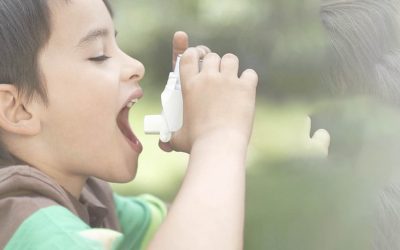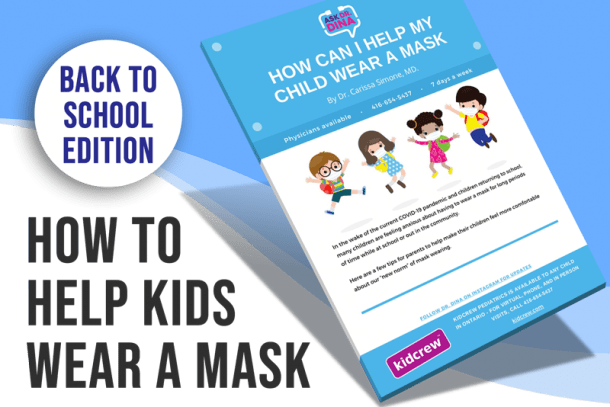Lactose Intolerance In Children – Gassiness and Belly Pain?
Parents tell me all the time that their children are lactose intolerant, just like they are. Their children exhibit milk intolerance symptoms that include: fussiness, bloating, irritability, gassiness and sometimes diarrhea or constipation when they eat dairy foods or drink milk. But are these children really lactose intolerant, or merely sensitive to milk products? Is there a difference?
Undigested lactose gets broken down by bacteria which causes gas, bloating, cramping and diarrhea.
What is lactose intolerance?
Lactose intolerance is the body’s inability to digest a protein found in milk products called lactose. An enzyme normally found in the small intestine called lactase helps break down the lactose to make glucose and galactose that the body can use as energy.
When the body doesn’t make enough lactase, the result is lactose intolerance. Undigested lactose gets broken down by bacteria which causes gas, bloating, cramping and diarrhea.
The higher the lactose load in a short period of time, the worse the symptoms.
Dairy intolerance symptoms
- Excessive gas or flatulence
- Diarrhea
- Abdominal cramping
- Abdominal bloating
- Fatigue
- Irritability
- Fussiness in small children
Symptoms vary depending on how much lactose is ingested and over what period of time. The higher the lactose load in a short period of time, the worse the symptoms.
Many children will develop temporary lactose intolerance after a bout of stomach flu (gastroenteritis), as the lactase secreting cells are sloughed off with diarrhea.
Who gets lactose intolerance?
Lactose intolerance in toddlers and babies is actually quite rare. Lactose intolerance in children is much more common, with boys and girls equally affected. Some ethnic groups are more susceptible than others. Asians and Blacks are more commonly affected, upwards of 90% in some communities. This is likely due to the fact that their ancestors did not eat much dairy, and didn’t develop the need to break it down.
Children with inflammatory conditions of the intestine, such as Crohns, Colitis and Celiac disease are more likely to develop lactose intolerance due to reduced lactase.
Children on antibiotics also seem to have lower levels of lactase and an increased risk of lactose intolerance. Many children will develop temporary lactose intolerance after a bout of stomach flu (gastroenteritis), as the lactase secreting cells are sloughed off with diarrhea.
When do you develop lactose intolerance?
Lactose intolerance in children is not a problem kids are born with, rather they develop it later on in life. Very few children have lactose intolerance, though many who are sensitive to dairy products in childhood will then develop true intolerance in adolescence or adulthood.
Most people with lactose intolerance are able to enjoy dairy products with some precautions
How is lactose intolerance diagnosed?
Many doctors will make the diagnosis based on symptoms. Older testing methods involved creating a lactose load and performing serial blood tests to measure its breakdown. Newer tests involve studying the breath (hydrogen breath test) to determine the successful breakdown of lactose. If the expired hydrogen level is high, this is indicative of lactose intolerance.
If your doctor is concerned about other diagnoses such as celiac disease, they may do an endoscopy (a camera is placed down the esophagus to take pictures and biopsies). This is rarely required.
Does that mean my child cannot eat lactose ever again?
Not at all! Most people with lactose intolerance are able to enjoy dairy products with some precautions. Milk intolerance symptoms can be controlled and mitigated by:
- Minimizing lactose load – if you eat only a little, you are less likely to get symptoms.
- Trying various amounts and products to see what is tolerated – many children can tolerate yogurt and cheese, but not milk or ice cream.
- Eating lactose with other foods (e.g. grains, proteins) to minimize irritation on the intestine
- Trying lactose free milk, cheese and ice cream
- Adding drops of Lactase or other lactose enzyme products to help digest the lactose
- Reading ingredient labels, as there is lactose added to foods all the time – Many boxed and prepared foods have added lactose as a preservative. Look for words such as cream, cheese, milk solids, powdered milk and whey.
If your child is unable to tolerate lactose, ensure that he or she is receiving enough calcium and vitamin D in their diet. There are many products that are calcium and vitamin D fortified (e.g. lactose free products), and many foods with high calcium content that are lactose free such as broccoli, tofu and some nuts. Meeting with a nutritionist or dietitian can help you figure out what foods have the most calcium.
Don’t worry – your child can happily enjoy milk with a bit of planning and only minimal dairy intolerance symptoms. They don’t need to miss out on pizza and birthday cake, as is so often the worry.
Click the link to read more about anaphylaxis and food allergy in kids
Dina is a wife, mother of 4, and adrenaline junky. She loves to share children’s health information from her professional and personal experience. More About Dr Dina.










